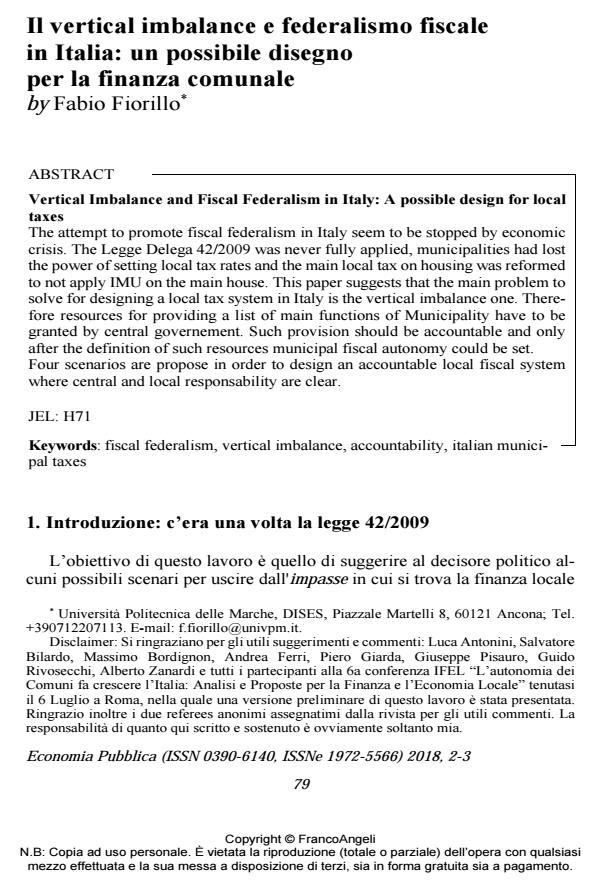Vertical Imbalance and Fiscal Federalism in Italy: A possible design for local taxes
Journal title ECONOMIA PUBBLICA
Author/s Fabio Fiorillo
Publishing Year 2018 Issue 2018/2-3
Language Italian Pages 28 P. 79-106 File size 338 KB
DOI 10.3280/EP2018-002004
DOI is like a bar code for intellectual property: to have more infomation
click here
Below, you can see the article first page
If you want to buy this article in PDF format, you can do it, following the instructions to buy download credits

FrancoAngeli is member of Publishers International Linking Association, Inc (PILA), a not-for-profit association which run the CrossRef service enabling links to and from online scholarly content.
The attempt to promote fiscal federalism in Italy seem to be stopped by economic crisis. The Legge Delega 42/2009 was never fully applied, municipalities had lost the power of setting local tax rates and the main local tax on housing was reformed to not apply IMU on the main house. This paper suggests that the main problem to solve for designing a local tax system in Italy is the vertical imbalance one. Therefore resources for providing a list of main functions of Municipality have to be granted by central governement. Such provision should be accountable and only after the definition of such resources municipal fiscal autonomy could be set. Four scenarios are propose in order to design an accountable local fiscal system where central and local responsability are clear.
Keywords: Fiscal federalism, vertical imbalance, accountability, italian municipal taxes
Jel codes: H71
- Real-Time Collection of the Value-Added Tax: Some Business and Legal Implications Richard Thompson Ainsworth, Boryana Madzharova, in SSRN Electronic Journal /2012
DOI: 10.2139/ssrn.2166316
Fabio Fiorillo, Il vertical imbalance e federalismo fiscale in Italia: un possibile disegno per la finanza comunale in "ECONOMIA PUBBLICA " 2-3/2018, pp 79-106, DOI: 10.3280/EP2018-002004